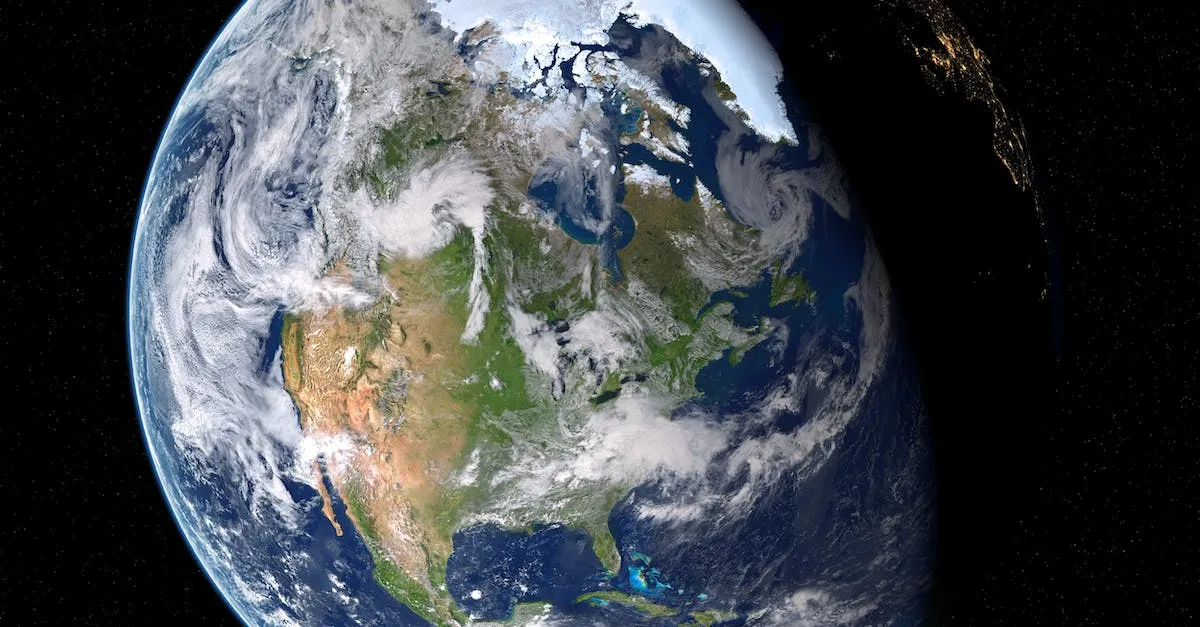Is Earth Science A Physical Science? Examining The Classification
Earth science encompasses diverse fields like geology, oceanography, and meteorology that study the planet we call home. But is this study of planet Earth considered a ‘physical science’ like physics or chemistry?
If you’re short on time, here’s a quick answer: Yes, earth science is generally classified as a physical science given its focus on the physical makeup and processes of Earth’s spheres using the scientific method.
In this in-depth guide, we’ll explore the definition of physical science and break down the reasons why earth science fits into this category of natural and physical sciences.
Defining the Physical Sciences
When it comes to classifying different fields of study, Earth Science often finds itself in a unique position. While many consider it a part of the natural sciences, others argue that it should be classified as a physical science.
To understand this classification better, let’s delve into what defines the physical sciences.
Focus on Nonliving Systems
One key characteristic of the physical sciences is their focus on nonliving systems. This means that they primarily deal with the study of inanimate objects and phenomena, such as matter, energy, and the forces that govern them.
Physics, chemistry, and astronomy are some of the disciplines that fall under this category. While Earth Science does involve the study of the Earth and its processes, it also encompasses nonliving systems like the atmosphere, geology, and the physical properties of the planet’s materials.
This overlap is what prompts the debate about its classification.
Emphasis on Laws of Nature
Another defining aspect of the physical sciences is their emphasis on the laws of nature. These laws describe the fundamental principles and relationships that govern the behavior of the physical world.
From Newton’s laws of motion to the laws of thermodynamics, physical sciences aim to uncover and understand these universal principles. Earth Science, although it may not focus exclusively on the laws of nature, does incorporate them into its study of geological processes, climate patterns, and natural disasters.
By examining these phenomena, Earth scientists also contribute to our understanding of the laws that govern the Earth.
Objective Observations and Experiments
The physical sciences rely heavily on objective observations and experiments to expand our knowledge. Through rigorous experimentation and data analysis, scientists strive to uncover new insights and validate existing theories.
Earth Science, similarly, relies on observational data and experiments to study the Earth’s systems and processes. Whether it’s monitoring seismic activity, collecting weather data, or analyzing rock samples, Earth scientists employ the scientific method to make objective observations and draw conclusions based on empirical evidence.
Earth Science Disciplines
Earth science encompasses a wide range of disciplines that study various aspects of our planet. These disciplines include geology, oceanography, meteorology, astronomy, and environmental science. Each discipline focuses on different aspects of Earth and plays a crucial role in our understanding of the planet and its processes.
Geology
Geology is the study of the Earth’s solid materials, such as rocks, minerals, and the processes that shape the Earth’s surface. Geologists investigate the formation of rocks, the movement of tectonic plates, and the history of the Earth’s changes over time.
They also study natural resources like oil, gas, and minerals, which are essential for our modern society.
Oceanography
Oceanography is the study of the Earth’s oceans, including their physical and chemical properties, marine life, and the interactions between the oceans and the atmosphere. Oceanographers explore topics such as ocean currents, tides, marine ecosystems, and the effects of human activities on the health of our oceans.
They play a crucial role in understanding and preserving these vast and diverse ecosystems.
Meteorology
Meteorology is the study of the Earth’s atmosphere and its phenomena, including weather patterns, climate, and the processes that govern them. Meteorologists use various tools and techniques to predict weather conditions and study climate change.
Their work is important for understanding and mitigating the impacts of severe weather events, such as hurricanes, tornadoes, and droughts.
Astronomy
Astronomy is the study of celestial objects, such as stars, planets, galaxies, and the universe as a whole. Astronomers use telescopes and other instruments to observe and analyze these objects, unraveling mysteries about their formation, evolution, and composition.
They also study phenomena such as black holes, supernovae, and cosmic radiation, contributing to our understanding of the vastness and complexity of the cosmos.
Environmental Science
Environmental science is an interdisciplinary field that combines elements of biology, chemistry, geology, and other sciences to study the Earth’s environment and the impact of human activities on it.
Environmental scientists investigate issues such as pollution, climate change, deforestation, and habitat destruction. Their work is crucial for developing sustainable solutions to protect our planet and ensure a healthy future for all living beings.
For more in-depth information on each of these Earth science disciplines, you can visit reputable sources such as USGS (United States Geological Survey) and National Geographic.
How Earth Science Uses the Scientific Method
The scientific method is a systematic approach used by scientists to study and understand the natural world. It is a process that involves making observations, forming hypotheses, conducting experiments, analyzing data, and drawing conclusions.
Earth science, like other branches of science, relies heavily on the scientific method to investigate and explain various phenomena that occur on our planet. Here, we will discuss how Earth science utilizes the scientific method to gain insights into the workings of our planet.
Observations and Hypothesis Formation
In Earth science, the first step of the scientific method involves making observations of natural phenomena. Scientists carefully study the Earth’s atmosphere, landforms, oceans, and other geological features to gather data and identify patterns.
These observations lead to the formation of hypotheses, which are educated guesses about the underlying causes or processes contributing to the observed phenomena. For example, scientists may observe changes in sea levels and hypothesize that they are related to climate change.
Experiments and Modeling
Once a hypothesis is formulated, Earth scientists design experiments or create models to test the validity of their hypotheses. In some cases, conducting experiments directly on Earth is not feasible due to the large-scale and long-term nature of certain geological processes.
In such situations, scientists rely on computer models to simulate and predict the behavior of the Earth system. These models incorporate various factors, such as temperature, pressure, and geological activity, to understand how the Earth functions.
For instance, climate models help scientists simulate and predict global climate patterns.
Analysis and Conclusions
After conducting experiments or running simulations, Earth scientists analyze the collected data to draw conclusions. They examine patterns, trends, and correlations in the data to determine if their hypotheses are supported or refuted.
Statistical analysis plays a crucial role in this stage, as it helps scientists identify significant relationships and quantify the likelihood of their results occurring by chance. For example, analyzing seismic data can provide insights into the structure and movement of tectonic plates.
It is important to note that Earth science encompasses a wide range of sub-disciplines, including geology, meteorology, oceanography, and astronomy. Each of these sub-disciplines applies the scientific method in unique ways to address specific questions and phenomena related to the Earth.
Earth science, as a physical science, relies on the scientific method to uncover the mysteries of our planet. By making observations, forming hypotheses, conducting experiments, and analyzing data, Earth scientists contribute to our understanding of the Earth’s processes and its place in the larger universe.
Key Physical Concepts in Earth Science
Earth science is a multidisciplinary field that encompasses various aspects of the physical world. While it may not be classified as a traditional physical science, it incorporates many key physical concepts that help us understand the Earth and its processes.
Matter and Energy
One of the fundamental concepts in Earth science is the study of matter and energy. This includes understanding the composition and properties of different materials found on Earth, such as rocks, minerals, and gases.
Additionally, it involves investigating the transfer and transformation of energy within Earth’s systems, including the movement of heat and the formation of weather patterns.
Force and Motion
Another important aspect of Earth science is the study of force and motion. This involves examining the forces that shape the Earth’s surface, such as plate tectonics and erosion. Understanding how these forces act on the Earth helps scientists predict and explain natural phenomena like earthquakes, volcanic eruptions, and landslides.
Laws of Thermodynamics
The laws of thermodynamics play a significant role in Earth science. These laws govern the transfer of energy and the behavior of systems within the Earth. For example, the first law of thermodynamics states that energy can neither be created nor destroyed, only transferred or transformed.
This principle is crucial in understanding the Earth’s energy balance and climate systems.
Atomic and Molecular Interactions
Earth science also involves investigating atomic and molecular interactions. This includes studying the behavior of elements and compounds within Earth’s systems, such as the chemical reactions that occur in the atmosphere and the formation of rocks and minerals.
Understanding these interactions helps scientists analyze and interpret the composition of Earth’s materials.
Conclusion
In conclusion, earth science is classified as a physical science because it focuses on the physical makeup and processes that shape planet Earth using objective observations, controlled experiments, and identification of physical laws.







